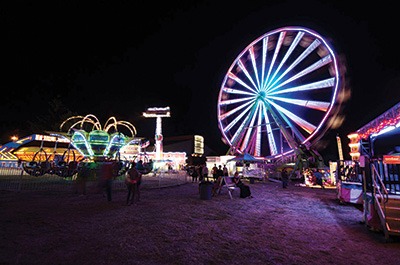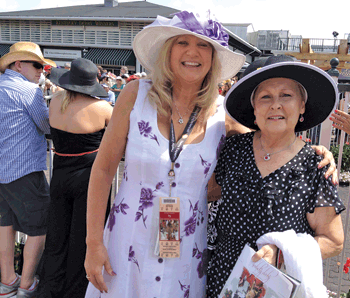“The competition for attendees is more intense than even five years ago,” said Flakus. Therefore, he continued, the challenge for fairs is to become more modern, yet still hold on to the traditional livestock/animals component, which is “the only thing that separates them from other events occurring in the community.”
Typically, a fair might have food vendors scattered across the fairgrounds, said Flakus, with no traffic flow or patterns (the food court at the Clark County Fair, Flakus’ longest continuous client, is a notable exception). GF Strategies’ approach is to develop a central “destination area” with a wide variety of foods and seating. He said it was not unusual to offer 20 different food styles.
 This past year, Flakus’ firm helped the Clark County Fair set an all-time food and beverage gross revenue record – $1.6 million during the 10-day event.
This past year, Flakus’ firm helped the Clark County Fair set an all-time food and beverage gross revenue record – $1.6 million during the 10-day event.
“We change the mix every year, work with vendors to make their booths more appealing by upgrading signage and dressing staff in uniforms,” explained Flakus. “Those kinds of things make a huge difference.”
Ten years ago, Flakus expanded his company’s focus beyond just local fairs to include stadiums, arenas and convention centers.
“It has been a very successful transition for me,” stated Flakus.
The objective is to get people to stay longer at the event (and therefore to purchase more) and determine food and beverage trends that induce people to buy higher-price items.
“It’s not just about the game or concert now,” said Flakus. “It’s more about becoming a full night event.”
He cited the Staples Center (home of the L.A. Lakers) as a prime example. This stadium has a nightclub area that serves as a destination to attract attendees before the event and to keep them there afterward.
Flakus said he has noticed several trends at fairs and stadiums. One such trend is partnerships with local restaurants, featuring specialty food items and a “chef of the day.” Also, he said, he is seeing a lot more live cooking and showing the customer exactly what is being prepared, and a focus on local sourcing of meat, fruit, produce, dairy products and wines.
Another major trend is mobile apps. Three years ago, Flakus’ firm launched a custom mobile app at the Oregon Brew Fest. By scanning QR codes on the festival’s program, attendees could get more information about a particular beer, share their beer ratings on Facebook and win prizes. Flakus hopes that the Oregon Winery Commission will use the app during its Memorial Day wine tour, and he anticipates licensing the app to local fairs as well.
Mobile payment, too, said Flakus, is growing in popularity. At several of the stadiums he works with, season ticket holders can use a mobile app to order – and pay for – food and beverages right from their seats.
Recognizing such trends and capitalizing on them is helping Flakus grow GF Strategies. His gross revenues have grown from about $60,000 in 1993 to about $160,000 in 2013. He said that in 2014, he is looking forward to working with more music festivals.
“They are starting to recognize they need to track food and beverage revenues and use mobile apps for payment,” said Flakus “I’m working with one of the largest music festivals in the country to move to a wireless/cashless food payment system.”
{jathumbnail off}





